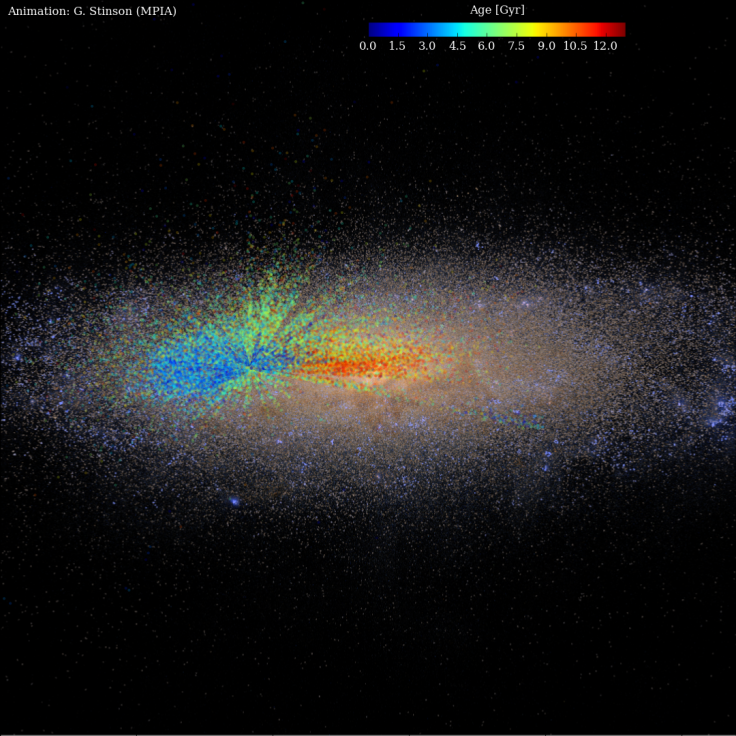First Age Map Of The Milky Way Reveals How Our Galaxy Grew Up

Much like a parent using a rule to measure the growth of a child year-to-year, astronomers have created a growth chart of the Milky Way. The data reveals how the galaxy developed from a newborn to a majestic spiral that spans 100,000 to 160,000 light-years across.
The growth chart, released Thursday, determined the Milky Way grew outward with older stars staying close to the center of the galaxy. Younger stars were found on the fringes of the Milky Way.
Red giants — stars in the final stages of their evolutionary cycle — were crucial to creating this age map of the Milky Way. The astronomers from Max Planck Institute for Astronomy measured the age of 70,000 red giants using data collected by the Apache Point Observatory Galaxy Evolution Experiment (APOGEE) survey.
APOGEE can observe 300 stars simultaneously. Over several years, the researchers found enough red giants to begin creating the map, but needed additional data from the planet-hunting Kepler space telescope to accurately determine the age of several thousand stars. The astronomers then applied this model to find the ages of 70,000 red giants.
"Close to the center of our Galaxy, we see old stars that were formed when it was young and small. Farther out, we see young stars. We conclude that our Galaxy grew up by growing out," Melissa Ness, from the Max Planck Institute for Astronomy in Heidelberg, Germany, said in a statement.
The Milky Way was theorized to grow from the inside out. First formed 13.6 billion (+/- 800 million) years ago, dark matter — the unseen matter that makes up 27 percent of the universe whereas normal matter makes up 5 percent -- surrounded the galaxy. The gravitational pull of dark matter pulled hydrogen and helium together. As these gases cooled, the very first stars began to form. Dwarf galaxies and subhalos — clusters of stars — were drawn inward into the forming galaxy by dark matter located within the center.
As gas and dwarf galaxies collided, they would slow down and travel deeper into the center of the galaxy. This center would soon gain more mass and would spin at a faster rate shaping the center into a disk. The spiral arms were formed by other interactions of gas and dwarf galaxies.
The age map of the Milky Way confirms this theory, according to Ness. Going forward, data from APOGEE-2 or other galactic surveys in the future could determine how stars formed within the Milky Way at different times in the galaxy. Astronomers can use this information to better understand how elements combined to form stars and, eventually, life on Earth.
"In the galaxy we know best – our own – we can clearly read the story of how galaxies form in a universe with large amounts of cold dark matter," Ness said. The research was presented at the 227th meeting of the American Astronomical Society.
© Copyright IBTimes 2024. All rights reserved.






















